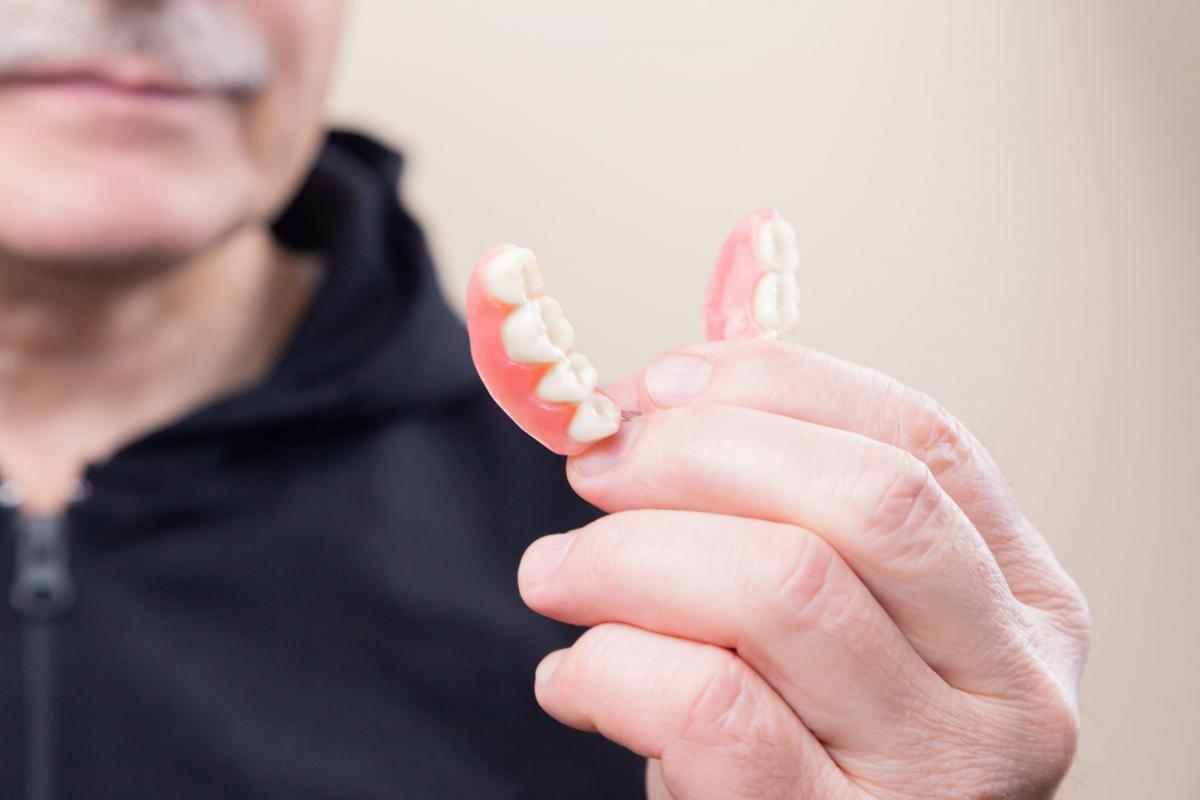What Is An Overdenture and How Is It Supported?
Dental dentures have long been an indispensable part of dental treatment options to replace a single, or a set of missing teeth. However, restoring the smiles of patients with dentures had been a major challenge for dentistry. Traditional dentures might be a convenient and less complicated treatment option for many, but many others find wearing them a source of embarrassment and frustration.
Now, more than ever, denture wearers have loads of options to choose from. They no longer have to wear the same type of dentures their grandparents might have used. One of the most popular choices to eliminate the suffering from uncomfortable dentures is the overdenture.
What is an Overdenture?
An overdenture is a removable prosthesis that covers and rests on one or more natural teeth or dental implants. Overdentures may be supported by either two, three, or four dental implants. The real game-changer provided by overdentures is their ability to stabilize and secure a prosthesis without dental adhesives.
As the name suggests, an overdenture is designed to go over a supporting structure like dental implants to gain support and stability. Hence, if you wish to improve your chewing function to chew your favorite foods, an overdenture might be the best option for you.
Also, if you are already using dentures and wish to improve their support and retention, overdentures may work for you. Even in patients with significant bone loss due to long-term denture usage, overdenture is recommended to preserve the jaw bone from further damage.
How Does an Overdenture Work?
As mentioned, dental implants or existing teeth provide support to overdentures and they are connected to the denture with the help of special connectors known as location abutments. This abutment or implant attachment on the top of the implant creates a snapping mechanism that is strong enough to keep the denture in position during chewing. These attachments also allow for easy removal of the denture for cleaning and maintenance.
Unlike the traditional denture, overdentures allow the wearer to chew with greater stability, harder foods which cause traditional denture wearers difficulty. To achieve this functionality, overdenture attachment plays a big role by preventing the denture from pressing down too hard on the gingival tissue.
Hence, these attachment systems are considered the pillars of overdenture treatment. There are various attachment types used to connect implants or existing overdentures.
Overdenture Attachment
There are certain guidelines that help you decide which attachment might be best for a particular situation. These guidelines below are based on Sterngold’s 80 years of experience with dental attachments, but the final decision must be based on a clinical judgment and patient needs.
In most cases, teeth that retain overdentures are reduced, approximately to the height of the gums. Before starting the prosthetic procedure these teeth are treated endodontically and other periodontal problems are resolved.
- In cases with 50% or more bone loss, the prognosis of these roots is relatively poor. For this condition, an intraradicular anchor or Stern Root Anchor will be the best choice as it protects such roots by providing the least amount of lateral forces to these roots.
- In cases with 50% or less bone loss, radicular studs or bars can be used. Splitting abutments with bars make them stronger. Other advantages of bar attachments include better transmission of forces, load sharing, and better retention.
Attachment retained implant overdenture has become a cost-effective alternative to removable dentures because of the comfort, function, and support it provides. To take advantage of these benefits, a dentist must select the best possible attachment option by considering factors like the amount of retention needed, amount of bone available, oral hygiene standards, maxillomandibular relationship, patient expectations, inter implant distance, etc. Keeping these factors in mind, Sterngold provides a comprehensive range of implant abutments to retain implant overdentures.
Attachment Design Characteristics

The overdenture attachment system comprises two parts:
- The matrix for retentive anchor
- And a patrix attachment to closely fit the matrix, either mechanically or with friction
One part of this attachment system is connected to the implant or existing teeth and the other is incorporated within the surface of the overdenture.
The matrix designs are replaceable and adjustable. The matrix component is the clip for bar; plastic/nylon caps springs, metal lamellae, or rubber O-rings for ball abutments; and keepers or retainers for magnetic abutments.
The patrix component is either the connecting bars or ball/magnetic abutments.
The various attachment options allow dentists and technicians to select a retentive mechanism to best suit their experience and necessary patient considerations.
For example, ball attachments are popular as their use precludes complex protocols or procedures. These ball attachments can be used with both root- and implant-supported overdentures. They can be easily incorporated in new and old dentures and thus provide advantages like low-cost, ease of handling, and minimal chair time. Also, ball attachments are particularly useful for optimizing stress and minimizing denture movements.
The ERA or extra-radicular attachment on the other hand is used to provide different degrees of retention - from light to heavy. ERA attachments are indicated when resilience is required and it also provides universal stress relief.
Another type of system is bar attachment that provides more stability of the denture and requires less maintenance. The bar and clip attachments are the most widely used attachments for implant-supported overdentures. The bar attachment consists of a metal bar to splint two or more implants or natural teeth and a sleeve to incorporate the overdenture. A wide variety of bar attachments are available with Sterngold, you can learn more about them here.
The Sterngold Promise
Sterngold, a leader in restorative dentistry products, carries extensive overdenture implant abutments, stud and anchor, and bar attachments. Instructional videos, courses, product catalogs, and a selection guide for attachments, are provided so the clinical practice and dental lab can make informed decisions.

